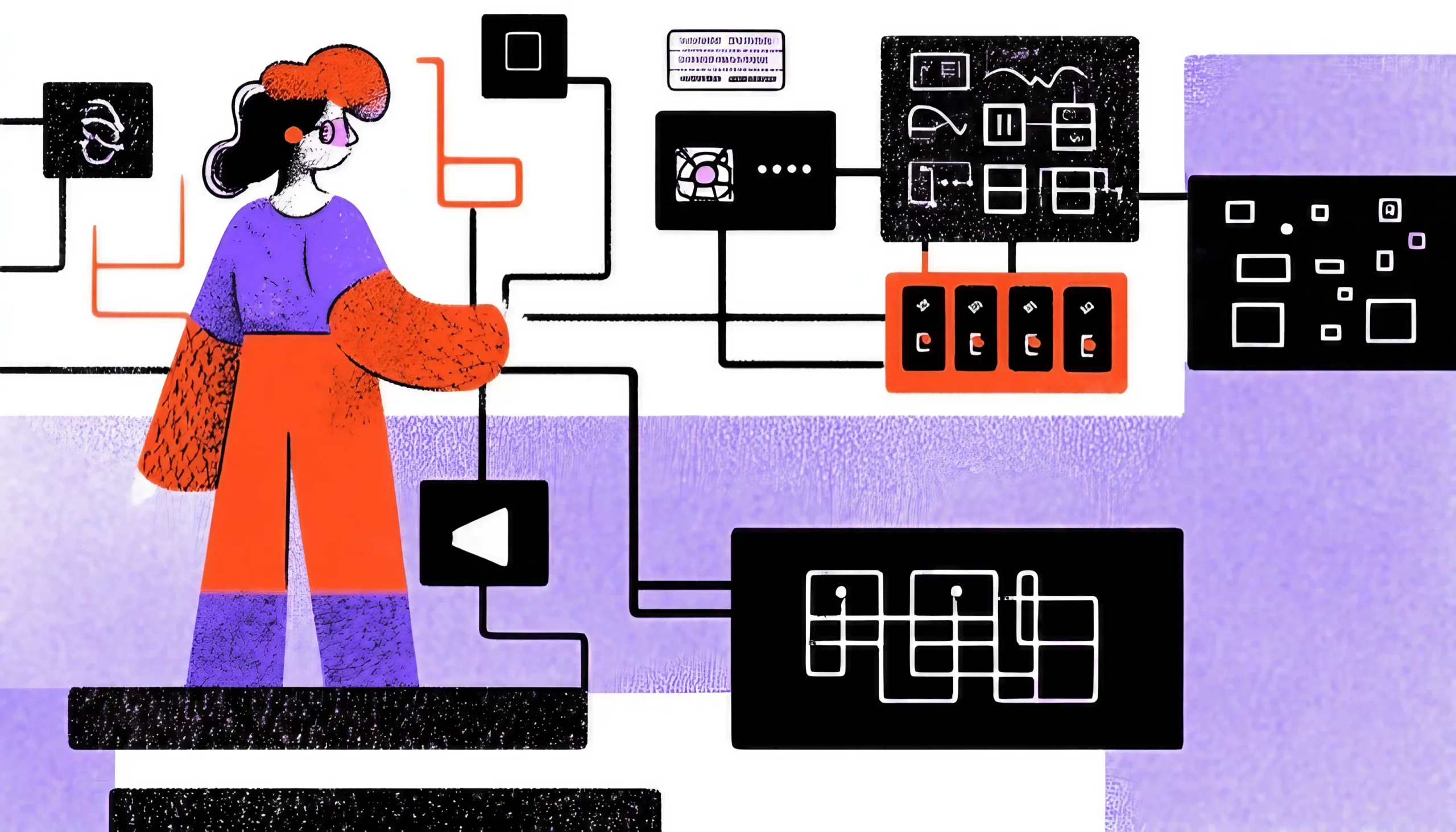Have you ever stared at a data dashboard and thought, “Wow, this looks impressive… but I have no idea what I’m looking at”?
You’re not alone.
In an age overflowing with dashboards, reports, and infographics, clarity has become the ultimate differentiator. It’s ironic, isn’t it? We have more data than ever, yet so many visualizations fail to communicate effectively. They overwhelm instead of enlighten. That’s where minimalist data visualization steps in—not as a design trend, but as a philosophy.
Minimalism in data visualization is about stripping away the noise to reveal the essence. It’s about guiding the viewer’s eye to what matters most. It’s about finding beauty in simplicity—using design restraint to achieve communication power.
So, how do you take a tangled mass of data and turn it into something clean, elegant, and deeply understandable? In this guide, we’ll explore the principles, techniques, and psychology behind minimalist data visualization—and how you can use them to create visuals that feel effortless but inform powerfully.

The Essence of Minimalist Data Visualization
Why Simplicity Is the Ultimate Form of Sophistication
Minimalist data visualization isn’t about making charts look “plain.” It’s about making them purposeful. Every pixel should serve a reason. Every element should earn its place.
Think of it like a well-designed room: clean lines, intentional spacing, no clutter—yet it feels warm, breathable, and complete. That’s the energy we want to channel into our data visuals.
In data visualization, minimalism equals cognitive efficiency. Users can absorb insights faster when their brains don’t have to fight through unnecessary ink, color, or decoration. This is backed by a fundamental concept called the data-ink ratio, introduced by Edward Tufte—the godfather of modern data visualization.
“Above all else, show the data.” — Edward Tufte
Tufte argued that every bit of ink on a chart should convey information. Anything that doesn’t—decorative grids, redundant labels, drop shadows, unnecessary legends—dilutes clarity. Minimalist visualization aligns perfectly with this philosophy: reduce, refine, reveal.
Here’s what it really means in practice:
- Use fewer chart types—bar, line, scatter, and area charts often suffice.
- Consider removing gridlines unless they are essential for comparison.
- Use labels sparingly and position them intuitively.
- Leave breathing room—whitespace helps the data stand out.
When you focus on essentials, your chart stops shouting and starts communicating.
Designing with White Space
Letting Data Breathe (and Speak for Itself)
White space—or negative space—is the unsung hero of minimalist design. It’s not just “empty” space; it’s active silence. It’s the pause between notes in a song that provides rhythm meaning.
In the world of data visualization, white space amplifies focus. It prevents information overload and helps guide the viewer’s attention to the most critical points. Without it, even great data stories suffocate under clutter.
Imagine reading a dense paragraph with no spacing or punctuation. Now imagine reading the same text with generous margins, clear line breaks, and visual hierarchy. That’s what white space does for your data visuals—it lets the story breathe.
Best practices for using white space effectively:
- Start with a margin mindset. Don’t let your chart elements hug the edges. Give them room.
- Balance density. High data density isn’t bad—it’s about structured clarity. For example, a scatter plot can have hundreds of points, but spacing and scale make it digestible.
- Use alignment grids. Even minimal layouts need invisible structure. Consistent spacing creates harmony.
- Think hierarchy, not emptiness. Use space to separate sections logically—like headers, filters, and insights.
When used intentionally, white space makes data feel more important, not less. It invites curiosity. It provides eye direction. It says, “Relax, you can understand this.”

The Subtle Power of Color
Less Palette, More Purpose
Color is one of the most powerful—and abused—tools in data visualization. When done right, it guides perception, evokes emotion, and encodes meaning. When done wrong, it turns a visualization into a kaleidoscopic confusion.
Minimalist data visualization embraces color restraint. Instead of splashing every hue in the rainbow, it chooses a tight palette—often just two or three tones—and uses them strategically.
Think of color as a language. Every shade should communicate something specific: category distinction, data magnitude, or alert priority. Anything else is visual noise.
Here’s how minimalist designers use color smartly:
- Limit your palette. Stick to 2–4 main colors and build hierarchy through saturation or opacity rather than variety.
- Use neutrals as a base. Grays and muted tones make accent colors pop.
- Highlight intentionally. One accent color can guide attention better than ten competing ones.
- Consider accessibility. Ensure sufficient contrast for readability, and test for color blindness compatibility using tools like Contrast Checker or Stark.
A great trick? Design your chart in grayscale first. Then, add color only where meaning demands it—like highlighting a trendline, an outlier, or a critical KPI. That’s minimalist color theory in action.
Color, when minimal, isn’t decoration—it’s direction.
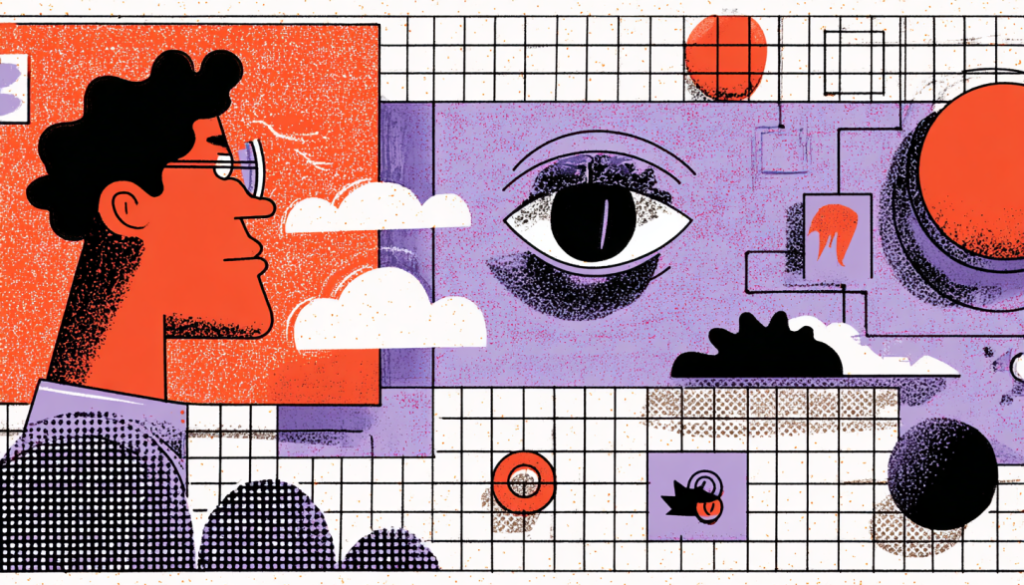
Typography, Grids, and Visual Hierarchy
Quiet Details That Make Loud Differences
Typography is often overlooked in data visualization. Yet it plays a vital role in guiding comprehension. Minimalist visualization calls for clear, consistent, and unobtrusive typography that supports the data rather than distracts from it.
Choose fonts that are easy to read at small sizes—think sans-serif families like Inter, Roboto, or Source Sans. Use weight, not decorative flair, to create emphasis. For instance:
- Regular text for labels and scales.
- Bold for chart titles and highlights.
- Light or italic for annotations or secondary notes.
Grids give visual order—the skeleton that keeps your data visuals structurally sound. They help align charts, legends, and text blocks into rhythm. Even if your design looks free-flowing, trust me: behind every clean visualization is an invisible grid system.
Visual hierarchy ties everything together. Ask yourself: Where do I want the viewer’s eye to go first? That’s your focal point. Then, arrange everything else around it in layers of decreasing emphasis—size, weight, and contrast can all serve as cues.
Minimalism doesn’t mean a lack of structure—it means invisible order. The user shouldn’t see the framework, but they should feel its balance.

Simplifying Complex Data
Turning Chaos into Comprehension
Here’s the paradox: minimalist data visualization is often used for the most complex datasets. Why? Because the harder the data, the more clarity it demands.
As a designer, your job isn’t to show all the data—it’s to show the right data. Think of yourself as a storyteller, not a statistician. A good story has pacing, structure, and emotional rhythm. Your data visual should too.
Here’s how to simplify complexity without dumbing it down:
- Focus on one insight per visual. Each chart should answer a single question. “What’s happening with revenue growth?” Not, “What’s happening with revenue, customers, churn, and product lines combined?”
- Use small multiples. Instead of one overloaded chart, use several small ones to compare trends.
- Label directly. Don’t make users bounce between the chart and the legend. Place labels near their data points.
- Eliminate redundancy. If your axis title says “Revenue (in millions),” you don’t need it repeated in the legend or tooltip.
- Visualize uncertainty. Use subtle cues—shaded ranges, dashed lines—to show variation or confidence intervals without clutter.
Think of it like editing a novel. You cut words not because they’re wrong, but because they’re unnecessary. The same applies here—data clarity is an act of thoughtful subtraction.
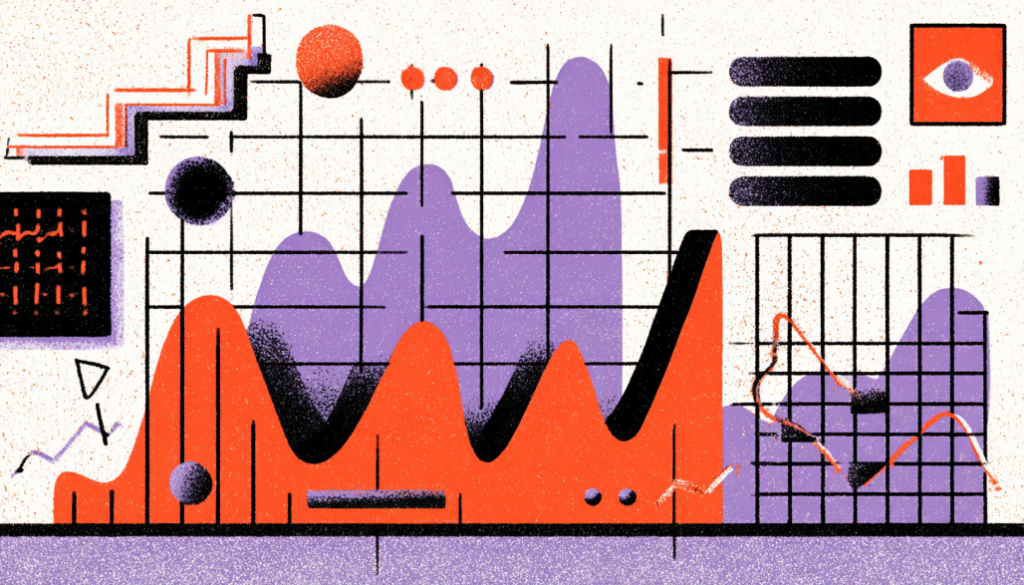
Designing Minimalist Infographics
When Visual Storytelling Meets Simplicity
Infographics are where design and data storytelling collide. Unfortunately, they’re also where clutter tends to creep in. Icons, gradients, 3D effects, and excessive fonts all serve as distractions from the main narrative.
Minimalist infographics, on the other hand, are timeless. They focus on narrative clarity. They don’t need fireworks; they just need flow.
Here’s how to make your infographics minimalist yet powerful:
- Use a modular layout. Think grids and sections that guide the eye logically.
- Prioritize one key message per section. Each block should tell a self-contained story.
- Rely on typography hierarchy. Title guides and subtext support.
- Integrate icons sparingly. Only where they reinforce understanding—not decoration.
- Stick to one visual metaphor. Don’t mix pie charts, bar charts, and timelines randomly.
The goal is to make your audience feel smarter, not lost. Minimalist infographics respect the viewer’s attention—they use silence, pacing, and structure to build trust.
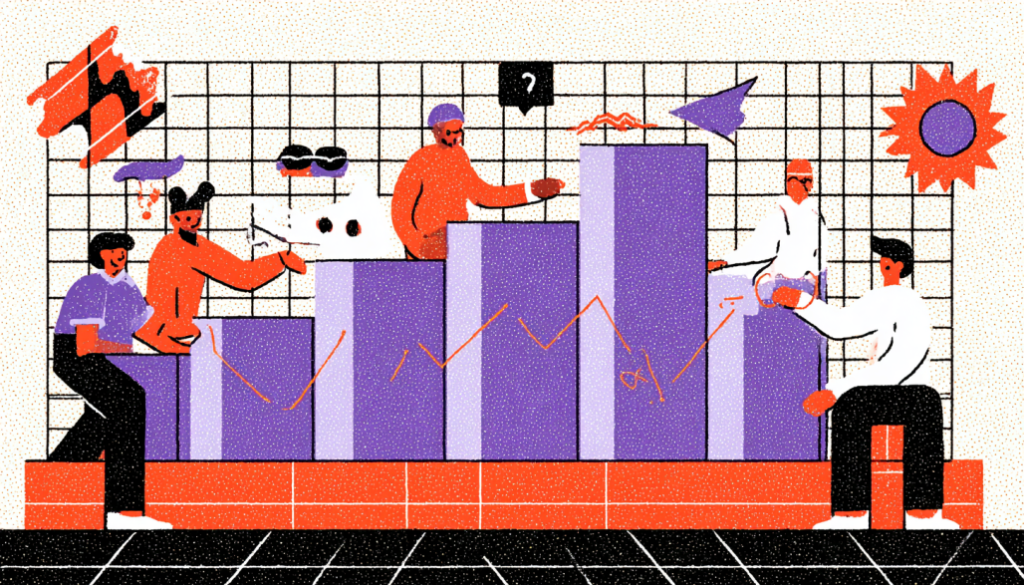
The Psychology Behind Minimalism
Why Our Brains Love Simplicity
Ever wonder why minimalist visuals feel so satisfying? It’s not just aesthetics—it’s neuroscience.
Our brains crave order. They naturally seek patterns and harmony. Too many competing visual signals trigger cognitive overload, making comprehension harder. Minimalist design reduces this load, allowing the brain to focus on meaning instead of noise.
Gestalt psychology explains this well—principles like proximity, similarity, and closure all underpin minimalist data visualization. When you use space, alignment, and contrast purposefully, you’re literally shaping how the brain organizes information.
Another psychological benefit? Perceived sophistication. Clean visuals signal credibility. Users subconsciously associate simplicity with professionalism and trust. In a world full of clutter, minimalism feels confident—because it doesn’t need to prove itself.

Common Mistakes (and How to Avoid Them)
When Minimalism Turns Into Miscommunication
Let’s be honest— “minimalist” is often misunderstood. Too minimal, and you risk ambiguity. Excessive decorative elements can lead to a loss of focus. The key is balance.
Common pitfalls include:
- Oversimplifying. Removing too much context can make data meaningless. Always include enough cues for understanding.
- Low contrast. Pale text or thin lines might look elegant on your monitor, but users need legibility first.
- Ignoring context. Minimalism doesn’t mean every visual fits every audience. Tailor complexity to your viewer’s data literacy.
- Hiding interactivity. If your chart is interactive, give subtle hints—icons, hover states, or microcopy—to guide users.
- Confusing emptiness with elegance. White space is strategic, not just a blank canvas. It should organize content, not leave it hanging.
Good minimalist design feels inevitable. Nothing more can be added—and nothing less can be taken away.
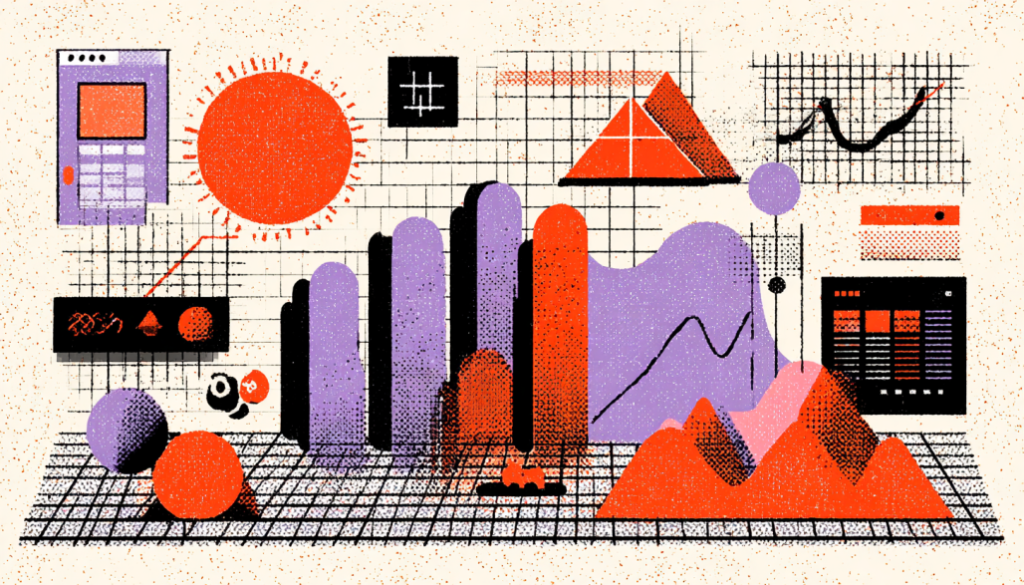
Tools and Techniques for Minimalist Data Viz
Your Modern Minimalist Toolkit
Luckily, achieving minimalism doesn’t require fancy tools—it requires restraint. Still, certain platforms make the process smoother:
- Figma or Sketch: For layout, grid systems, and typography hierarchy.
- Tableau or Power BI: Use custom themes and templates to enforce simplicity.
- Datawrapper or Flourish: Clean, export-ready charts with minimal defaults.
- D3.js or Chart.js: For designers who want precision control in the code.
- Color contrast tools: Such as Stark or Contrast Checker for accessibility.
The trick is consistency. Define a minimalist design system for your charts—consistent spacing, color palette, typography, and component hierarchy. This not only speeds up creation but also ensures every visualization feels cohesive and calm.
In the end, minimalist data visualization isn’t about flat design or white backgrounds. It’s about intention. It’s about understanding that the best visuals don’t show everything—they show what matters most.
When you master simplicity, white space, color restraint, and purposeful hierarchy, you don’t just make data look beautiful—you make it understandable, trustworthy, and human.
So the next time you build a chart, ask yourself:
“What can I remove that won’t change the meaning?”
That single question might just lead you to brilliance.





